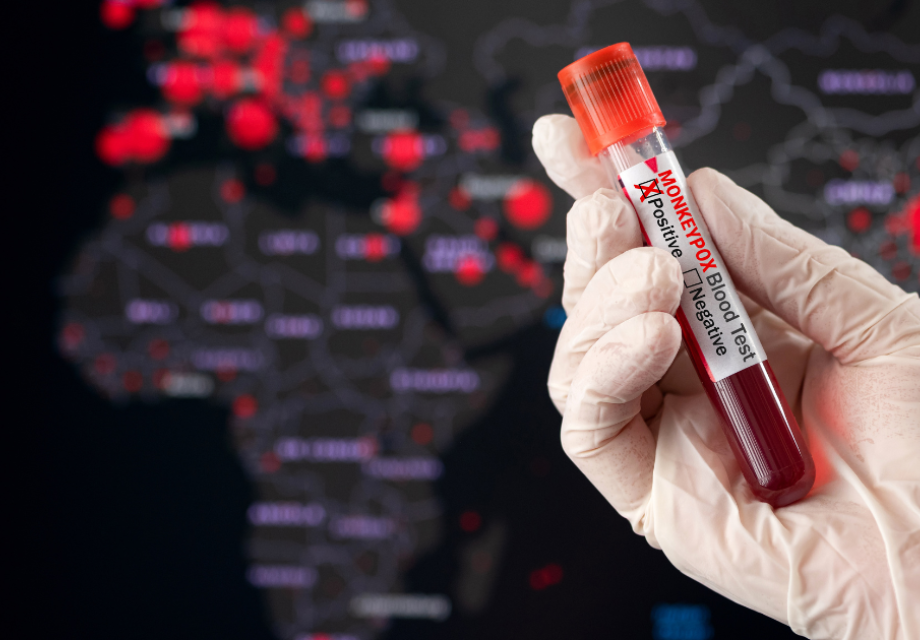The dangers of miscommunication during a global epidemic: Monkeypox is not a gay disease
Oliver Meth
18 July 2022
We must provide support and guidance grounded in empathy and not fear. We must not repeat the mistakes of the past
In recent weeks a number of cases of confirmed and suspected monkeypox infections have been reported in South Africa. The cluster of cases, so far includes a man who identifies as gay or bisexual or engages in sex with men. The media narrative emerging is sadly reminiscent of the AIDS crisis of the 1980s and 1990s – when gay men were blamed for spreading the disease.
Monkeypox is not a gay disease and neither are any other infectious diseases. It is unfortunate that this still needs to be said. It highlights how little we have learned from previous outbreaks.
Stigma hampers public health
Stigma directed at a particular group of individuals fuels fear and hampers public health interventions – as people are less likely to seek medical care. Labelling HIV infection a homosexual disease in the 1980s led to untold suffering in gay communities who were blamed for the epidemic. Cases were under-reported in the early days of the epidemic as people affected by the virus were put off from seeking medical care. This resulted in many missed opportunities to learn about the infection, understand its transmission and, provide targeted public health interventions to curb its spread. Instead, individuals in the group most affected at the time were blamed for their own suffering.
It wasn’t until it became obvious that HIV infections were not confined to the gay community that more resources and a political will to tackle the crisis were set in motion. Four decades later, the dynamic of the HIV epidemic has been completely transformed by highly effective treatment and prevention strategies.
Sadly, the ripple effects of stigma have been more difficult to erase and continue to be felt in the ongoing response to the HIV pandemic. The initial homophobia associated with the HIV pandemic were followed by communication strategies that made HIV appear to affect everyone equally. But these failed to discuss individuals' risk. This meant missed opportunities to address the particular needs of communities most affected by HIV.
Similar patterns of targeted stigma towards a specific group have emerged in the COVID-19 pandemic. At first, stigma was directed at people of Asian descent following reports of the first cases of SARS-CoV-2 infection from China. More recently stigma towards southern African countries followed the identification of the omicron variant highlighting intersections with racism. These patterns are harmful, dehumanising and unhelpful to any effective outbreak response. They must be challenged.
What we know about monkeypox
Monkeypox is a rare infection that is caused by the monkeypox virus. It is related to the smallpox virus but is less severe. In recent years there have been several reports of limited outbreaks with human-to-human transmission in endemic countries – Benin, Cameroon, the Central African Republic, the Democratic Republic of the Congo, Gabon, Ghana – and occasional imported cases in returning travellers from these regions.
Monkeypox can be passed on through close contact with contaminated surfaces or bodily fluids from infected individuals and through droplet transmission. Uncertainties around the details of transmission in the April-June 2022 cases in South Africa. Immediately attributing a clustering of cases among men who have sex with other men to sexual networks is not only premature but also feeds into negative stereotypes of sexual promiscuity being to blame for an expanding outbreak.
As we seek to learn more about the ongoing outbreak of monkeypox, our focus must be on giving information accurately describing the nature of infections without judgement, providing support and guidance to the public without stoking fear, and grounding the response in empathy.
Breaking the cycle of stigma
The harsh lessons we learned from previous and ongoing outbreaks must drive how we develop and communicate the need for disease surveillance without inadvertently alienating or negatively targeting any communities. This is how we break the cycle of stigma in infectious disease outbreaks. We’ve seen its damaging effects enough times to know better. That should translate into us doing better.
Get our news and blogs by email
Keep up-to-date with all our latest news stories and blogs by signing up to the Be in the KNOW news digest.
